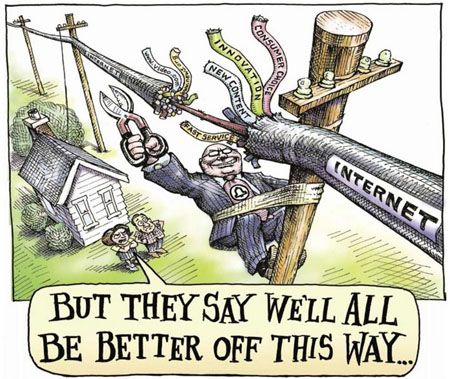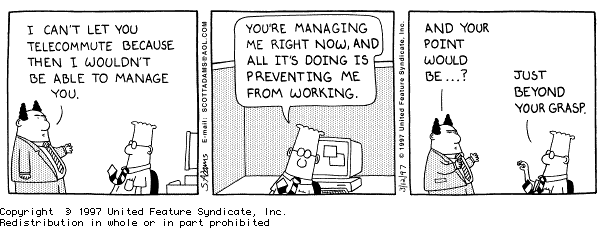“The sky is falling! The sky is falling!” That is what immediately popped into my head when I read claims that a pilot program the California State University System plans to launch using Udacity’s online classes to meet student demand in gateway courses is “the end of higher education as we know it” in the TechCrunch.com article penned by Gregory Ferestein on 15 January 2013.
As the CEO of a consortium that delivers quality online classes to over 5,000 community college students, I applaud their efforts to implement an online solution to address a rapidly growing issue that plagues students across the country, not just in California. Here in Kansas, eduKan has been delivering high quality, affordable and accessible online classes while also saving our students and our consortium-member institutions thousands of dollars each year. Although the biggest obstacle for San Jose State University will be figuring out how to hammer the MOOC “square peg” into the traditional “round hole,” it is not big enough to prevent them from launching a successful, affordable and accessible online program that meets the demands of both the institution and the students it serves. How do I know this? Because this is what eduKan* has been successfully doing for the past decade.
Although I have yet to uncover the conspiracy theory to replace professors with computers, I have observed the way in which technology is changing the role of faculty from the “sage on stage” to “content expert.” Quality online classes, like those at eduKan, are not run by a computer; they require human intervention – a faculty member who is implicitly and actively involved in every facet of the class, from selecting course curriculum and content, to determining the delivery method of various content, to establishing and evaluating student engagement with course content and with each other, to safe-guarding student success by watching for early indicators of students at risk, to consistently ensuring course content quality through real time feedback from analytics. And let’s not forget the virtual office hours that online faculty members offer to students for individualized interactions.
 What do we need to do to erase the misperception that online classes are comprised solely of content from a traditional class, posted to a static web page and peppered with videos of a professor lecturing to a camera? The faculty teaching online for eduKan have the resources to design a class that engages the student in ways never before possible. Using digitally embedded content, we can offer students access to a multitude of multi-modal assets, freeing them from the confines of an expensive one-dimensional textbook. Using moderated threaded discussions; we are able to provide students with myriad social learning opportunities. Using analytics, we can see how students engage with each other, with the content, and with the faculty. Using predictive analytics, faculty can identify students who are struggling to be successful and then implement a personalized early intervention strategy.
What do we need to do to erase the misperception that online classes are comprised solely of content from a traditional class, posted to a static web page and peppered with videos of a professor lecturing to a camera? The faculty teaching online for eduKan have the resources to design a class that engages the student in ways never before possible. Using digitally embedded content, we can offer students access to a multitude of multi-modal assets, freeing them from the confines of an expensive one-dimensional textbook. Using moderated threaded discussions; we are able to provide students with myriad social learning opportunities. Using analytics, we can see how students engage with each other, with the content, and with the faculty. Using predictive analytics, faculty can identify students who are struggling to be successful and then implement a personalized early intervention strategy.
Perhaps more threatening to traditional faculty than the thought of being replaced by a computer is the assessment data available from analytics. Before we had the massive amount of irrefutable data gleaned from the activity of the thousands of online students, we were forced to rely upon anecdotal student surveys as one of the only ways to measure the effectiveness of faculty. At best, the metrics were arbitrary and far too often given little credibility. Now that analytics has provided unbiased data-driven assessments of faculty performance, there is a new focus on accountability that even tenure can no longer protect. Far too often what is couched in questions of course rigor and quality is really a diversion tactic employed by feckless faculty.
Indeed, change is coming.
The pilot at San Jose State University is just the beginning. Online classes are not the “end of higher education as we know it.” Altruistic institutions that challenge the faculty-centric traditional model of higher education to focus on delivering a quality education their students in a way that is attainable, sustainable and scalable is, in fact, participating in a new beginning. Whether or not this changes higher education in California** remains to be seen. What I do know, however, is we at eduKan are leading the charge to change the way institutions teach and students learn.
*eduKan is the recipient of the NUTN 2012 Institutional Achievement Award
**See Phil Hill,Guest Blogger’s post on WCET entitled California Switches Driver on Road to Future of Higher Education


 Yesterday’s Security-Today.com article, by David Rizzo, entitled “The Next Step in ID Verification”
Yesterday’s Security-Today.com article, by David Rizzo, entitled “The Next Step in ID Verification” Yesterday, the Supreme Court struck down key components of the FCC’s Open Internet Rules, effectively ending
Yesterday, the Supreme Court struck down key components of the FCC’s Open Internet Rules, effectively ending  While Netflix can afford to pay a higher premium to be able to stream endless hours of content at the highest speeds to their subscribers, how can a consortium of community colleges in Kansas afford to deliver hours of online education to thousands of students via the Internet? They simply cannot afford to pay the same rates as the media monoliths, rendering students helpless and frustrated as they move through their online coursework at the speed of Methuselah, relegated to the bottom of the bandwidth.
While Netflix can afford to pay a higher premium to be able to stream endless hours of content at the highest speeds to their subscribers, how can a consortium of community colleges in Kansas afford to deliver hours of online education to thousands of students via the Internet? They simply cannot afford to pay the same rates as the media monoliths, rendering students helpless and frustrated as they move through their online coursework at the speed of Methuselah, relegated to the bottom of the bandwidth.
 What could possibly go wrong with Congress involved? Oh wait, didn’t this entire state authorization debacle get started because one Senator wanted to stop the spread of for-profit education. Hey, thanks for the help!
What could possibly go wrong with Congress involved? Oh wait, didn’t this entire state authorization debacle get started because one Senator wanted to stop the spread of for-profit education. Hey, thanks for the help!





 Yahoo! CEO Marissa Mayer unleashed a
Yahoo! CEO Marissa Mayer unleashed a
